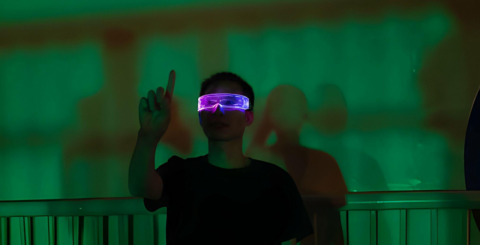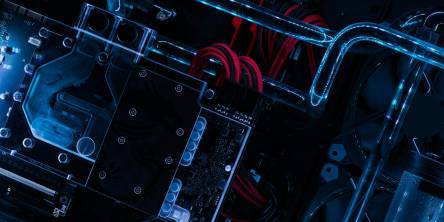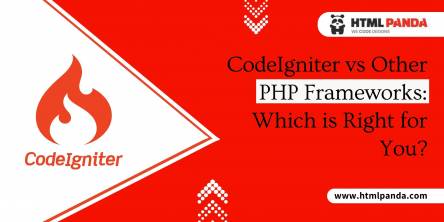Exploring the Night Vision Manufacturer Landscape in 2024

Are you curious about how night vision technology works and its various applications? This article will delve into the world of night vision, including different types of technology, such as image intensification, thermal imaging, and active illumination.
What Is Night Vision?
Night vision technology allows seeing in low light or darkness, benefiting industries like the military, surveillance, and wildlife observation. It provides a tactical edge in stealth operations, enhances safety, and supports nocturnal research. Recent market growth is attributed to advancements in thermal imaging, digital night vision, and augmented reality technologies, improving overall performance.
How Does Night Vision Work?
Night vision technology enhances visibility in low-light conditions through image intensification or thermal imaging. It captures available light, amplifies it, and employs features like infrared illuminators for improved vision in darkness. This technology is crucial for applications like surveillance, security, hunting, and navigation in challenging environments.
What Are the Different Types of Night Vision Technology?
Night vision technology includes image intensification, thermal imaging, and active illumination, each enhancing visibility differently. Infrared technology detects thermal radiation and is effective in low-light and complete darkness, providing clear images. Optical devices like night vision goggles amplify available light with lenses and mirrors, making objects visible at night. Surveillance tools, like thermal cameras, are widely used for security to monitor and detect suspicious activities in the dark.
Image Intensification
Image intensification technology, crucial for night vision devices, amplifies available light to provide clear images in low-light environments. It captures photons, converts them into electrons, amplifies them, and displays visible pictures for users. This technology is vital for military, law enforcement, hunters, and outdoor enthusiasts, allowing enhanced vision in the dark. The market sees a rising demand for night vision devices with advanced image intensification technology, driving continuous innovation among industry leaders to stay competitive.
Thermal Imaging
Thermal imaging captures heat signatures to create detailed images, providing superior visibility in low-light conditions. This technology utilizes infrared radiation to form images based on temperature differences, benefiting applications like surveillance and search and rescue missions. It allows clear vision in complete darkness or through obstacles like smoke, giving an advantage over optical cameras. The captured data can be optimized through digital image processing for enhanced details and valuable insights, making it useful for medical diagnostics.
Active Illumination
Active illumination technology, using built-in light sources, has spurred innovation, partnerships, and the entry of new players into the night vision market. It has transformed device designs, making them sleeker and more efficient for industries like surveillance and security. Strategic partnerships between established and emerging companies drive advancements, exchanging expertise and resources. The entry of new players injects fresh perspectives, fostering healthy competition and pushing the boundaries of possibilities in active illumination technology.
What Are the Applications of Night Vision Technology?
Night vision technology is widely applied in military and law enforcement for surveillance, hunting, and wildlife observation, meeting consumer demand. It has revolutionized military operations, improving nocturnal surveillance and target acquisition. In consumer sectors, it is used in camping, nature exploration, and home security. Night vision goggles, now more affordable and user-friendly due to technological advancements, have gained popularity among outdoor enthusiasts, leading to widespread adoption.
Military and Law Enforcement
Night vision technology is crucial in military and law enforcement operations. It facilitates security and surveillance with advanced features, global presence, and continuous technological advancements.
These advancements have significantly enhanced the ability of security forces to operate efficiently in challenging environments and conduct covert operations under cover of darkness, ultimately increasing situational awareness and threat detection. With its widespread global presence, night vision technology is utilized by various agencies worldwide to combat crime, protect borders, and ensure public safety. The evolution of night vision tech has revolutionized modern warfare and law enforcement practices by providing a tactical advantage and improving operational effectiveness in low-light conditions.
Hunting and Wildlife Observation
Night vision technology aids in hunting and wildlife observation activities by providing enhanced visibility for navigation, capturing market share with superior manufacturing capabilities, and improving accuracy in the transportation sector.
Whether seeking nocturnal prey or studying elusive wildlife, seeing clearly in low-light conditions is crucial. Night vision technology has revolutionized how hunters track their targets and researchers observe animals in their natural habitat. With advancements in thermal imaging and infrared sensors, hunters can easily navigate through dense forests and vast terrains. This innovation enhances efficiency and opens up new possibilities for expanding market share by catering to diverse consumer needs and preferences.
Security and Surveillance
Night vision technology enhances security and surveillance tasks through high product quality, adherence to performance standards, and thorough industry analysis, ensuring optimal functionality.
This technology ensures clear visibility in low light or complete darkness, allowing surveillance professionals to monitor areas effectively. The high-quality lenses and sensors in night vision devices provide crisp images and real-time data, improving safety and security measures.
Adherence to strict performance standards guarantees reliability and accuracy in capturing images and detecting potential threats. Industry analysis helps manufacturers stay updated on the latest advancements and incorporate innovative features into their products, catering to the evolving needs of security and surveillance applications.
Navigation and Transportation
Navigational aids and safety enhancements in transportation are bolstered by night vision technology, contributing to market growth, providing valuable industry insights, and pushing the boundaries of night vision technology.
Integrating night vision technology in various transportation sectors has revolutionized how vehicles navigate low-light conditions, enhancing safety for drivers, passengers, and pedestrians. As this technology advances, it offers a competitive edge to companies in the transportation industry, enabling them to operate more efficiently and securely. The market growth of night vision solutions reflects the increasing demand for improved visibility and situational awareness, driving innovation and further technological developments in this sector.
What Are the Key Players in the Night Vision Industry?
Prominent players in the night vision industry, including L3 Technologies, FLIR Systems, Elbit Systems, BAE Systems, Thales Group, and Harris Corporation, drive market analysis and invest in cutting-edge research. Their expertise and strategic vision shape the market by analyzing trends and consumer demands, playing a crucial role in forecasting technological advancements. They strive to enhance night vision technology's performance, durability, and versatility through dedicated research and development, setting new benchmarks and raising industry standards.
L3 Technologies
- L3 Technologies is a leading player in the night vision industry.
- The company contributes to market growth and advances in night vision technology.
- Known for cutting-edge innovations, L3 Technologies expands the market for night vision.
- Deep industry insights enable effective addressing of emerging needs.
- Continuous technological advancements by L3 set new standards for clarity and precision in low-light environments.
- Dedication to progress extends applications to military operations, security, surveillance, and wildlife observation sectors.
FLIR Systems
- FLIR Systems is a strong player in the night vision industry with strategic market positioning.
- Their competitive edge comes from cutting-edge technology and continuous research and development commitment.
- Staying ahead of market trends, FLIR Systems remains a frontrunner in night vision solutions.
- Strategic partnerships with industry leaders enhance product offerings and global reach.
- FLIR Systems exceeds customer expectations, setting new benchmarks for excellence in the night vision market.
Elbit Systems
- Elbit Systems excels in market strategies, supply chain analysis, and market segmentation for night vision technology.
- Their focus on market strategies identifies trends and customer preferences, allowing tailored product and service offerings.
- In-depth supply chain analysis ensures efficient material sourcing and timely delivery to meet market demands.
- Strategic market segmentation targets specific customer groups with customized solutions, increasing customer satisfaction and market share in the competitive night vision industry.
BAE Systems
- BAE Systems enhances its position in the competitive night vision market by forecasting trends and addressing challenges.
- Leveraging cutting-edge technology and understanding customer needs, the company stays ahead in the rapidly evolving sector.
- Continuous research and development ensure high-quality, performance-driven products, gaining a competitive edge.
- Monitoring market forecasts and adapting strategies allows BAE Systems to remain agile, respond to challenges, and identify growth opportunities.
- This proactive approach maintains its leadership position and drives innovation in the night vision market.
Thales Group
- Thales Group tailors night vision solutions to meet market demands through regulatory compliance, product differentiation, and customer alignment.
- Proactive adherence to evolving regulatory frameworks ensures products meet the latest standards, fostering trust in offerings.
- Investment in cutting-edge technology and innovative design sets Thales Group's night vision solutions apart from competitors.
- By understanding customer preferences, the company tailors offerings to create a personalized experience for each client, enhancing satisfaction.
Harris Corporation
- Harris Corporation is a key player in night vision technology, driving market expansion through continuous technological advancements.
- The company invests significantly in research and development, staying at the forefront of innovation in the night vision industry.
- This commitment enables Harris Corporation to meet current market demands and anticipate future needs, setting new standards for performance and functionality in night vision devices.
- The company's efforts have significantly expanded its market reach, attracting diverse customers seeking cutting-edge solutions for their night vision requirements.
What Are the Trends and Innovations in Night Vision Technology?
Current night vision technology trends focus on innovative solutions, using cutting-edge technology to improve optical performance and enhance user experience. These advancements have significantly improved image clarity and sharpness in low-light conditions. Manufacturers, including industry leader Steele Industries, continually push the boundaries of optical performance, enabling users to see more clearly in the dark. Integrating advanced sensors and algorithms has revolutionized night vision devices, making them more reliable and versatile for applications like surveillance, hunting, and security operations.
Miniaturization and Integration
Miniaturization and integration reshape the night vision industry, affecting market dynamics and competition. Advancements in miniaturization have led to smaller, more portable devices with enhanced performance. Consumers now prefer compact and lightweight solutions, prompting manufacturers to innovate for a competitive edge. Integration trends enable the addition of features, making night vision devices more versatile. As these trends evolve, the market is expected to undergo further transformations, with new players entering to compete for market share.
Digital Night Vision
Digital night vision technology is revolutionizing the industry, enabling precise market segmentation and accurate forecasts. It provides unparalleled clarity in low-light conditions, allowing businesses to tailor products and services to specific customer segments. This precision in segmentation enhances understanding of target audiences, leading to effective responses to their needs. Accurate market forecasts from digital night vision data empower businesses to make confident strategic decisions, improving operational efficiency and fostering sustainable growth. However, challenges like integration complexity and data security concerns need to be addressed so that industry players can fully harness the potential of this cutting-edge technology.
Augmented Reality
Augmented reality (AR) innovations in night vision offer new market opportunities and unique product differentiation strategies. Integrating AR technology enhances accuracy and effectiveness, providing users with immersive experiences. This expands applications across defense, security, gaming, and automotive industries. AR also facilitates compliance with regulatory standards by optimizing operational processes. Incorporating AR elements sets companies apart from competitors, demonstrating a commitment to innovation and customer-centric solutions.
Artificial Intelligence and Machine Learning
AI and machine learning drive tailored solutions, expanded market reach, and continuous advancements in night vision technology. These technologies revolutionize device design, enabling real-time customization based on user preferences. Manufacturers use AI and ML algorithms to analyze user behavior, optimize product features. This personalized approach enhances user experience and keeps the technology relevant. Integrating AI and ML opens new market avenues, offering innovative solutions beyond traditional military and surveillance applications.
Similar Articles
Discover the best lease accounting software for your business needs with our expert guide. Compare features, pricing, and make the right choice today!
Our world is constantly changing, and that much has been for everyone to see.
Steel church buildings offer a practical and efficient solution for congregations looking to build or expand their worship space. With customizable designs and a variety of sizes, steel constructions can accommodate the unique needs of different religious communities.
Discover how AI phone assistants revolutionize reservations! Explore streamlined booking processes & enhanced customer experiences. Dive in now!
In today's technologically advanced landscape, understanding heat distribution is critical for enhancing efficiency and safety across various sectors. Infrared thermography, a pivotal imaging technique, has revolutionized how professionals view and analyze thermal performance.
In this digital age, there are many options available for marketing, but the one that stands out as one that can transform the marketing realm is programmatic connected TV (CTV). The programmatic CTV approach for advertising shows the changing trend in how brands would like to connect with their audience.
PHP has a dominant market position, with over 79% of websites powered to some degree. Developers majorly utilize organized and leveled PHP basic functions, known as PHP frameworks, to create flexible output.
The nonstop hum of machines around us, from the humongous industrial complexes to the processors within the gadgets, shapes our everyday lives. These mechanical advancements have become essential, driving everything from fundamental necessities to our vehicles, airplanes, and so forth.
New methods of managing a Pilate business are transforming the way studios operate. It simplifies routine tasks and helps fitness businesses to grow and facilitate their customers in various ways.









